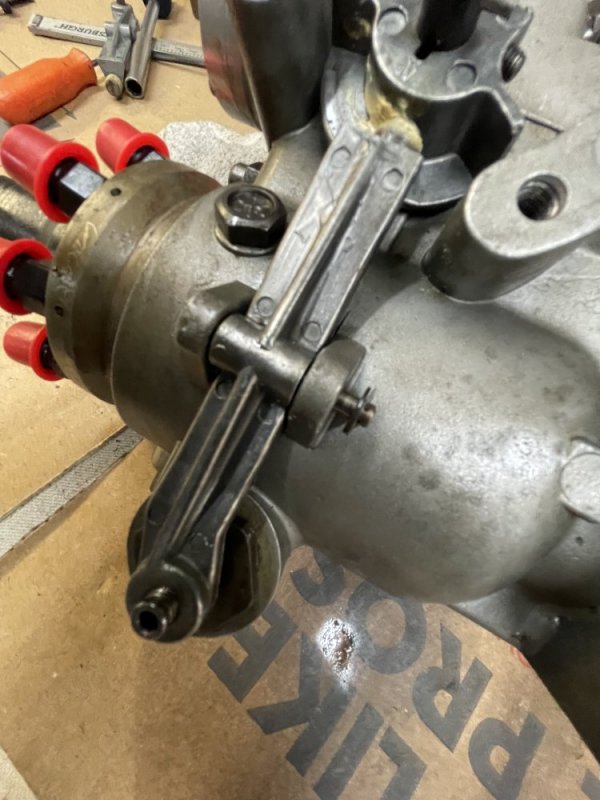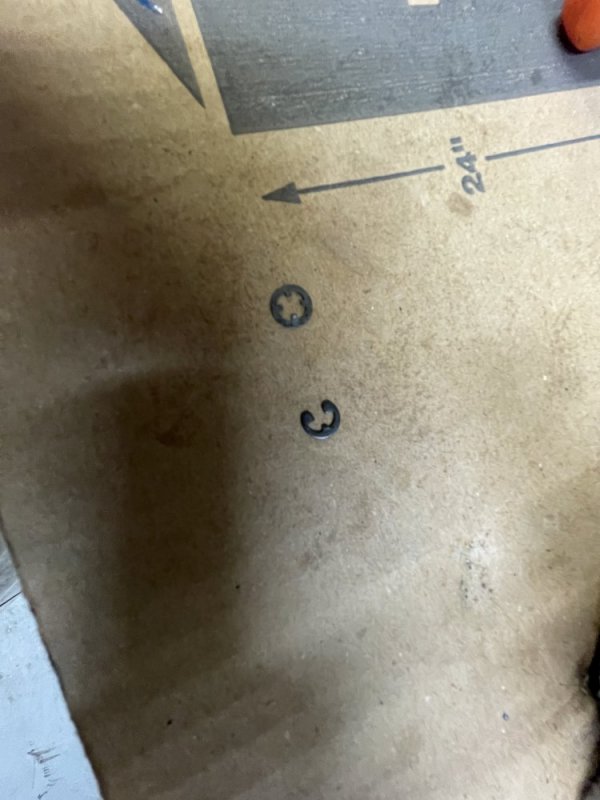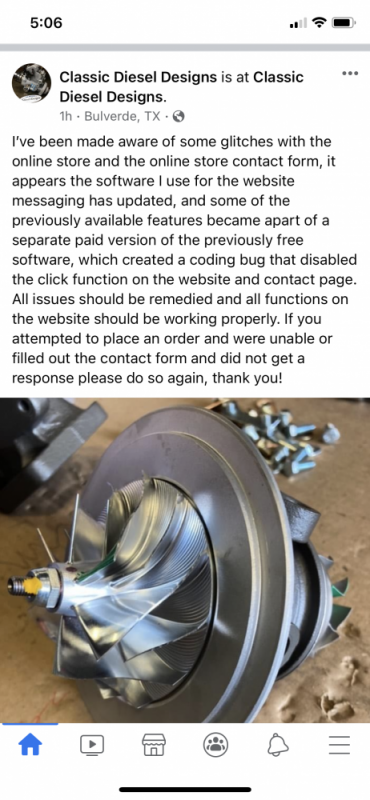I guess getting parts machined out of stronger metals like titanium or something would be too expensive huh? And at that point maybe machining a different pump mounting configuration and using a better pump would be cheaper, not cheap but maybe cheaper, just brain storming. Is there a 8 cylinder P Pump made?The hole cant be opened up because it has to seal transfer pump pressure internally in the piston for the timing advance to work
There is a larger pin available that was used in the DB4 AG pumps. But it takes some machine work to make it work other than opening up the can ring and advance piston. The "automotive" DB2 cam pin has a groove machined into it for transfer pump pressure to flow into the cam pin which pushes on the advance servo to direct TP pressure to the back of the advance piston to change timing. So no only does the groove need to be added, but the advance piston and cam ring will need to be opened up at an offset as to no mess up the passages the advance servo controls. The hole needs to be very precise so there is no loss of transfer pump pressure as well as the advance passage would be extremely close to the large hole required for the larger pin. Its doable but i have to find a EDM shop wiling to do such a small project.
Navigation
Install the app
How to install the app on iOS
Follow along with the video below to see how to install our site as a web app on your home screen.
Note: This feature may not be available in some browsers.
More options
-
Welcome to The Truck Stop! We see you haven't REGISTERED yet.
Your truck knowledge is missing!
- Registration is FREE , all we need is your birthday and email. (We don't share ANY data with ANYONE)
- We have tons of knowledge here for your diesel truck!
- Post your own topics and reply to existing threads to help others out!
- NO ADS! The site is fully functional and ad free!
Problems registering? Click here to contact us!
Already registered, but need a PASSWORD RESET? CLICK HERE TO RESET YOUR PASSWORD!
You are using an out of date browser. It may not display this or other websites correctly.
You should upgrade or use an alternative browser.
You should upgrade or use an alternative browser.
P400 in the Burb install
- Thread starter spdgofast
- Start date
Rockabillyrat
SlIgHtLy StUpId.
I'm going to look into having camrings made in the future. There was a production change at some point and I found a more desirable cam ring profile on an older pump. The problem is finding more of them. So far I've located 4 of them. They are smooth and should allow for less issues when increasing the roller to roller spec.
There is a 8 cylinder p pump available. It was used on older IH engines if I remember correctly. Rumor has it there is a hummer running around with one. But I have yet to see proof of it. Hypermax built a 7.3 idi with that pump in the 90s. And R&D is working on one now.
There is a 8 cylinder p pump available. It was used on older IH engines if I remember correctly. Rumor has it there is a hummer running around with one. But I have yet to see proof of it. Hypermax built a 7.3 idi with that pump in the 90s. And R&D is working on one now.
Will L.
Well-Known Member
Yeah, the owner of the hummer with it is a hollywood guy so wont share info for fear being outed as an evil hummer owner and not work again. He paid a stupid amount, i think $10k for the pump being fully done because they are so rare and most in horrible condition by now. Then all the stuff to fit it was another 20k- but he was paying not diy so it could be done for far less.
I will hassle him to let me take pics and share again but it’s not like I have his phone number, and he hasn’t called me since 2 months after everything was done. Probably forgot I exist actually- haha. I was just 1 guy of 5 he got help from on that project, and thats 2 hummers he owns of probably two dozen rides...
I will hassle him to let me take pics and share again but it’s not like I have his phone number, and he hasn’t called me since 2 months after everything was done. Probably forgot I exist actually- haha. I was just 1 guy of 5 he got help from on that project, and thats 2 hummers he owns of probably two dozen rides...
So I messed with the pump a little just know, when I went to pull the pin out of the advance rocker lever I discovered that there was no C clip retainer on one end, I doubt it fell off so it was probably left off. So after removal of the lever I pulled the servo advance plunger, then I took a 45* dental pick and pulled the MECH LLA SPRING, when this happened the servo advance valve sorta laid over on it's side therefore prohibiting it from sliding out the the hole in the plug so I removed the plug and pulled it out. I then moved the servo advance piston back and forth and watched the cam ring moving freely. I sprayed some FreeAll with a red tube nozzle like on a can of brake clean through the advance piston bores to make sure it was clean. So upon reassembly the only thing I thought was a little off was when I put it back together the advance servo piston and its spring pretty much was a press fit to hold them together as one, then I just replaced threaded plug with the spring lined up in it's bore and then installed the servo advance plunger and finally the advance rocker lever. So the only thing I saw off in this whole process was the C clip off the lever pivot shaft and the fact that the servo advance valve spring was not pressed on the the servo advance valve enough to pull it out with the spring. Was it stuck therefore the spring pulled off when I pulled the spring or was it never pressed together like it appears to be the proper fit. Rockabilly please chime in, thx
Attachments
Rockabillyrat
SlIgHtLy StUpId.
The spring not being seated on the advance servo is weird. Its a snug fit and I would think it would have seated it self even if they didn't assemble them connected. But as long as you didn't have to physically push the servo out it doesn't sound like it was stuck in there. If it slid right out then I doubt that was the issue. It looks like your timing advance system is in good condition from what I can tell.
Did conestoga send you a calibration sheet on this pump? Its odd that if it had a timing issue they missed it on the bench?
Did conestoga send you a calibration sheet on this pump? Its odd that if it had a timing issue they missed it on the bench?
Rockabillyrat
SlIgHtLy StUpId.
The down fall to a rotary pump is when you want to increase high rpm fueling it will drastically increase low rpm fueling. Thats what the smoke puff limiter is good for. It limits fueling in the lower rpm until you build boost. It helps to flatten the fuel curve. Thoes flow numbers are at WOT so its not idling with 150cc at closed throttle. I was hoping for timing specs.
Are you running 25psi of inlet pressure to the pump like its calibrated for?
Are you running 25psi of inlet pressure to the pump like its calibrated for?
Are you looking at the first invoice I posted which is the second pump? It says it tested at half engine speed the first pump test results read different.The down fall to a rotary pump is when you want to increase high rpm fueling it will drastically increase low rpm fueling. Thats what the smoke puff limiter is good for. It limits fueling in the lower rpm until you build boost. It helps to flatten the fuel curve. Thoes flow numbers are at WOT so its not idling with 150cc at closed throttle. I was hoping for timing specs.
Are you running 25psi of inlet pressure to the pump like its calibrated for?
Rockabillyrat
SlIgHtLy StUpId.
Camshaft speed is half of crankshaft speed. So the pump is always tested at half speed. Some people list crankshaft speed on there spec sheets so its less confusing.
You need to run 25psi of inlet pressure if that's what the pump is calibrated for. On a stock pump if you go over 10psi of inlet pressure it will start to advance the timing because the inlet pressure is higher than that transfer pump pressure at that point.
I'd reinstall the pump and run 25psi of inlet pressure to it and see what it does. That might advance the timing more and fix your issues.
You need to run 25psi of inlet pressure if that's what the pump is calibrated for. On a stock pump if you go over 10psi of inlet pressure it will start to advance the timing because the inlet pressure is higher than that transfer pump pressure at that point.
I'd reinstall the pump and run 25psi of inlet pressure to it and see what it does. That might advance the timing more and fix your issues.
n8in8or
I never met a project I didn’t like
Thanks Nate, he actually emailed me yesterday afternoon and we went back and forth for a couple of emails and then the responses stopped I asked him to give me a call. We'll se what happens, I just can't send $2500 based on a brief description on a website without discussing my needs and such verbally. I guess I'm old fashion.
Rockabillyrat
SlIgHtLy StUpId.
If it makes you feel better about it, I wouldn't think twice about spending $2500 on a pump from Wes. He does really good work and does not cut corners. His Big Bore pumps use a billet input shaft, that adds $750 to the pump cost. The big bore pumps are around $2000 in parts and machining to build.
Rockabillyrat
SlIgHtLy StUpId.
Also I feel like I should mention that the stock input shaft has a weak link machined into it. So if the pump locks up it will snap the input shaft and save the engine. In order to get BIG fueling from the big bore pumps an all billet shaft was needed to eliminate the weak link in the input shaft. So that being said if the pump fails... you may have catastrophic engine failure.
So his billet shafts do not have the tapered shafts to protect the engine?Also I feel like I should mention that the stock input shaft has a weak link machined into it. So if the pump locks up it will snap the input shaft and save the engine. In order to get BIG fueling from the big bore pumps an all billet shaft was needed to eliminate the weak link in the input shaft. So that being said if the pump fails... you may have catastrophic engine failure.
Rockabillyrat
SlIgHtLy StUpId.
So his billet shafts do not have the tapered shafts to protect the engine?
No, the extreme fueling from the big bore pumps was snapping the stock input shafts. So he had to eliminate the tapered breaking point. Figured since you have a p400 that was something you would want to know. That's only on the .370" and bigger pumps, as far as I know he still uses the stock input shaft on the .310 and .330 pumps.




